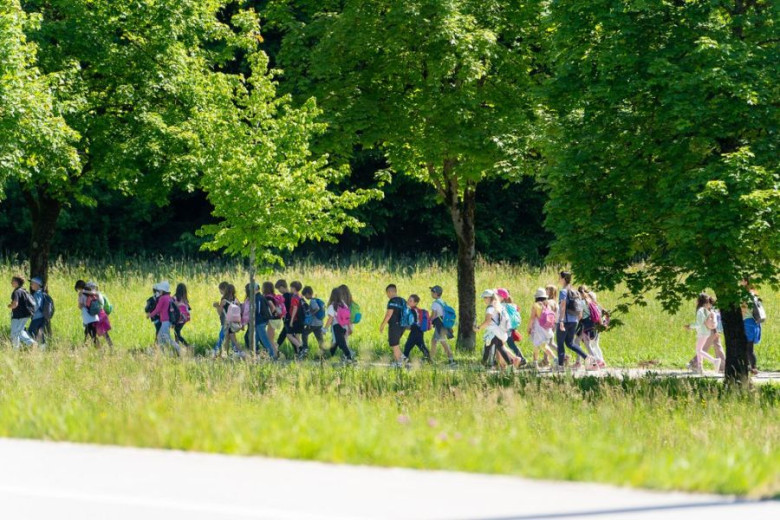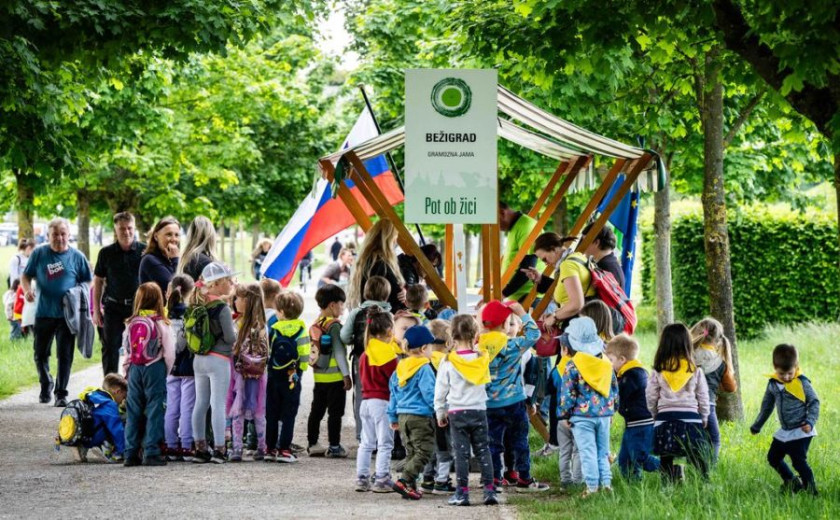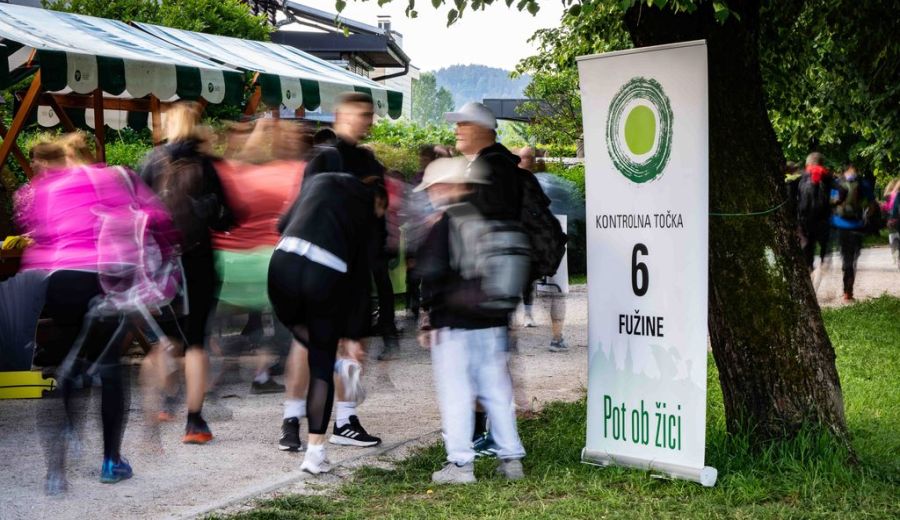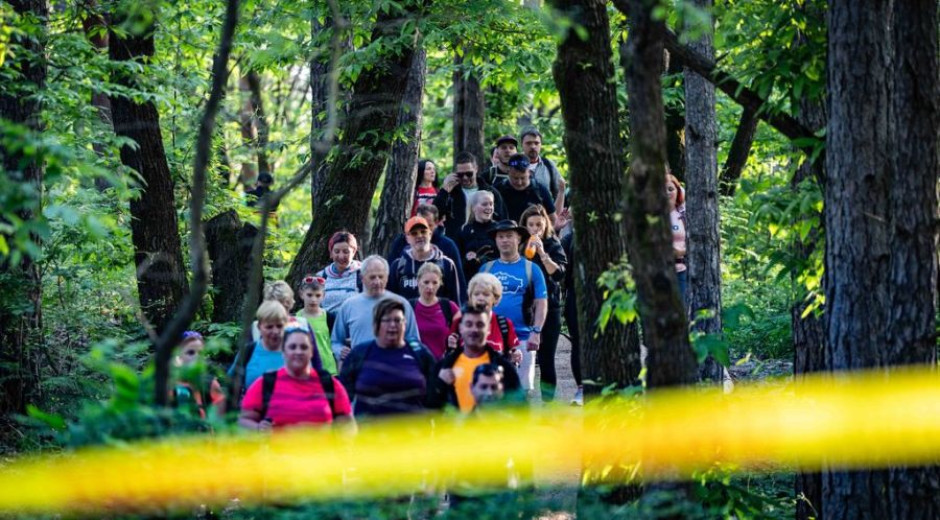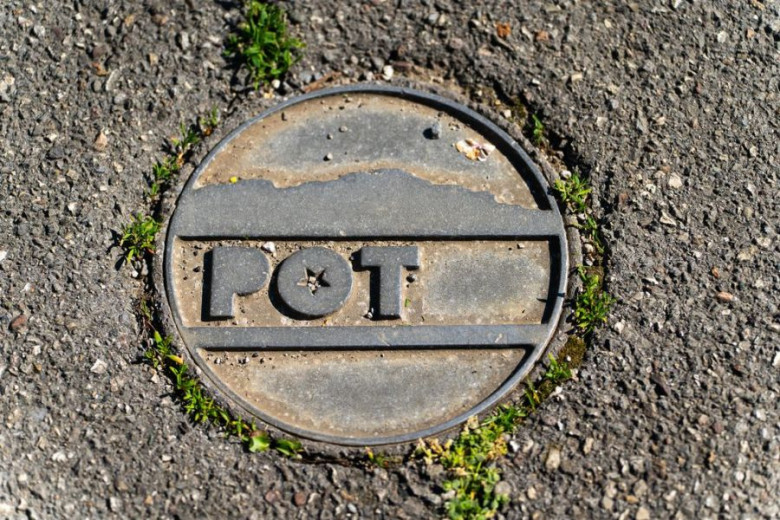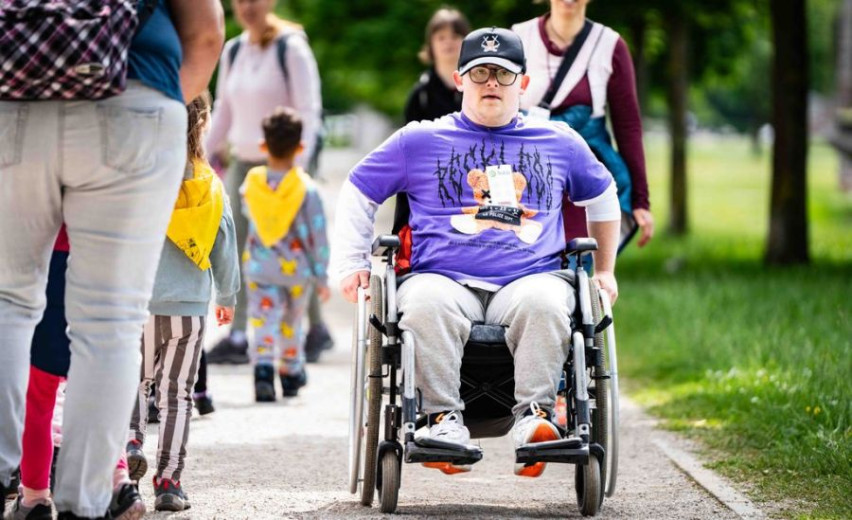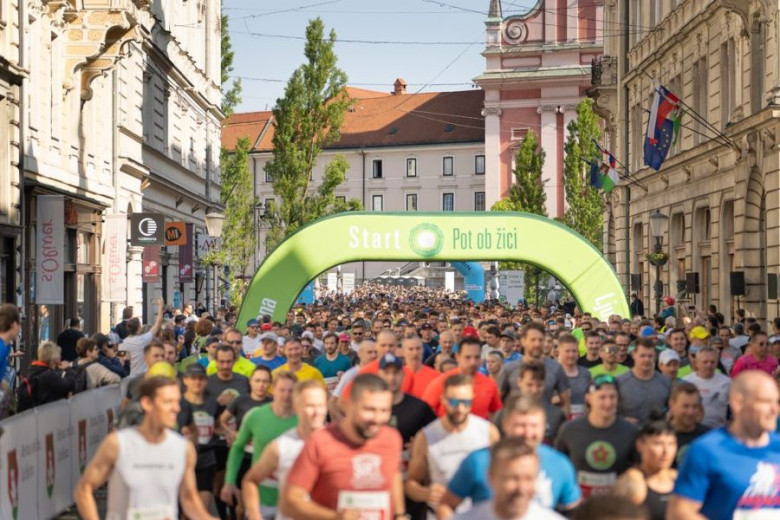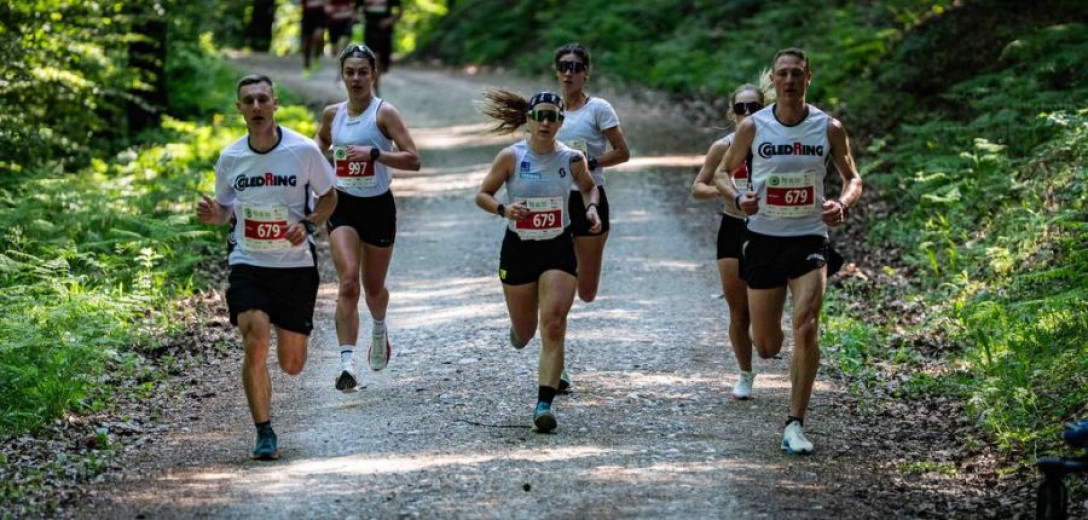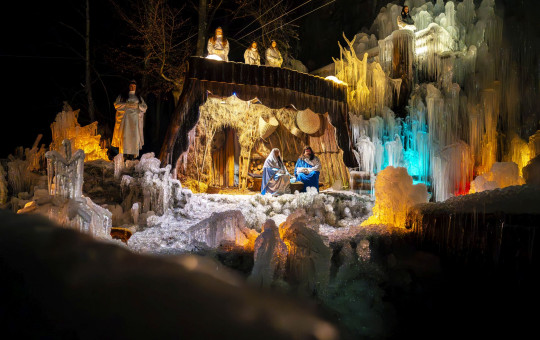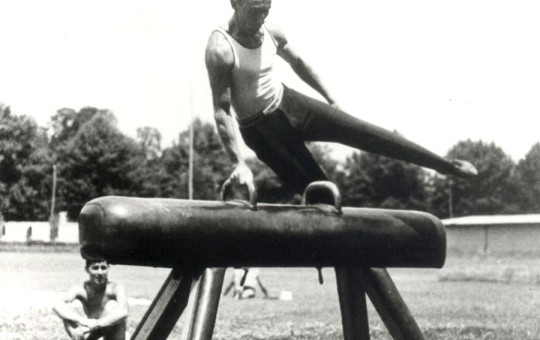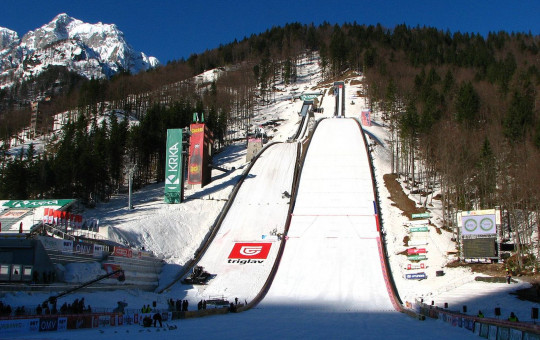Date: 8. May 2025
Time to read: 1 min
Between 23 February 1942 and 26 May 1945, Ljubljana was surrounded by barbed wire erected by the Italian army. For 1,170 days, its citizens remained trapped in the city, and passage was only possible with a special pass. Today, a 32.5-kilometre-long trail, the Trail of Remembrance and Comradeship, runs along the course of the barbed wire fence that once surrounded Ljubljana.
Ljubljana is not the only city to have been surrounded by barbed wire during the Second World War, but it holds a special place in history. The city was completely cut off from its surroundings by the barbed wire fence, which had a profound impact on the lives of its inhabitants, who were facing severe hardship. The main purpose of the wire was to prevent possible attacks and to weaken the resistance movement. The ring of wire was extended several times and eventually stretched almost 30 kilometres.
-
 Run Along the Wire, 1958. Photo: Unknown, kept by the National Museum of Contemporary History of Slovenia
Run Along the Wire, 1958. Photo: Unknown, kept by the National Museum of Contemporary History of Slovenia
-
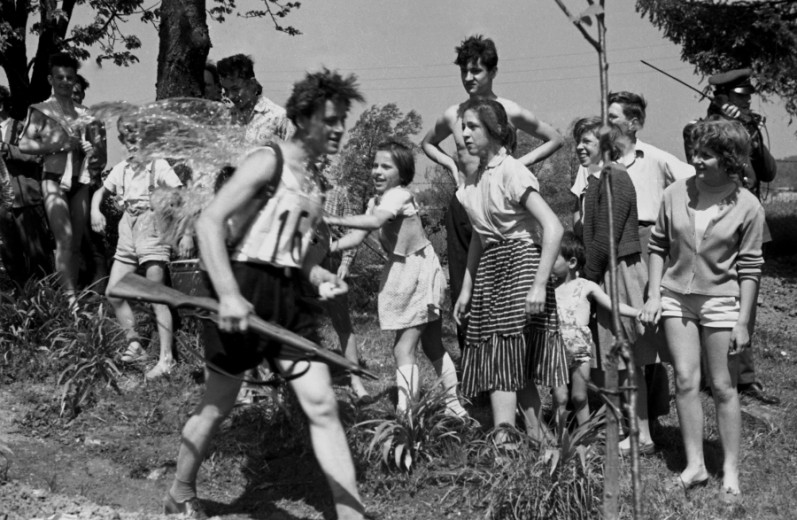 Run Along the Wire, 1958. Photo: Unknown, kept by the Nationa Museum of Contemporary History of Slovenia
Run Along the Wire, 1958. Photo: Unknown, kept by the Nationa Museum of Contemporary History of Slovenia
-
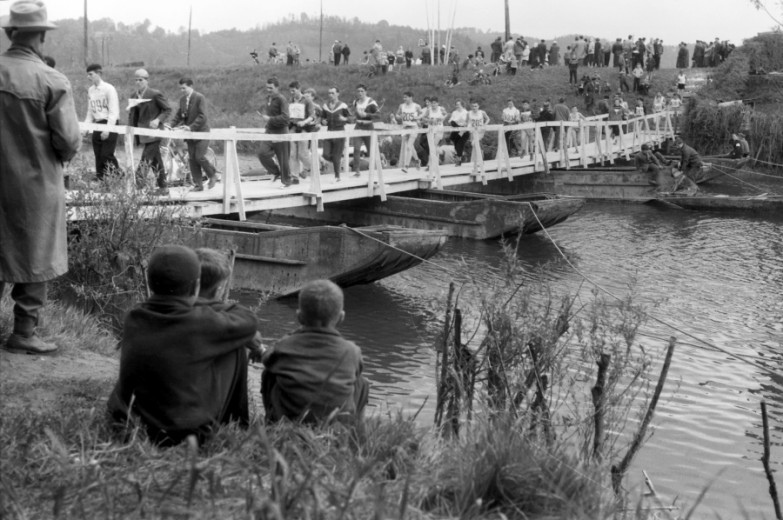 Run Along the Wire, 8 May 1960. Photo: Lojze Jerala, kept by the National Museum of Contemporary History of Slovenia.
Run Along the Wire, 8 May 1960. Photo: Lojze Jerala, kept by the National Museum of Contemporary History of Slovenia.
-
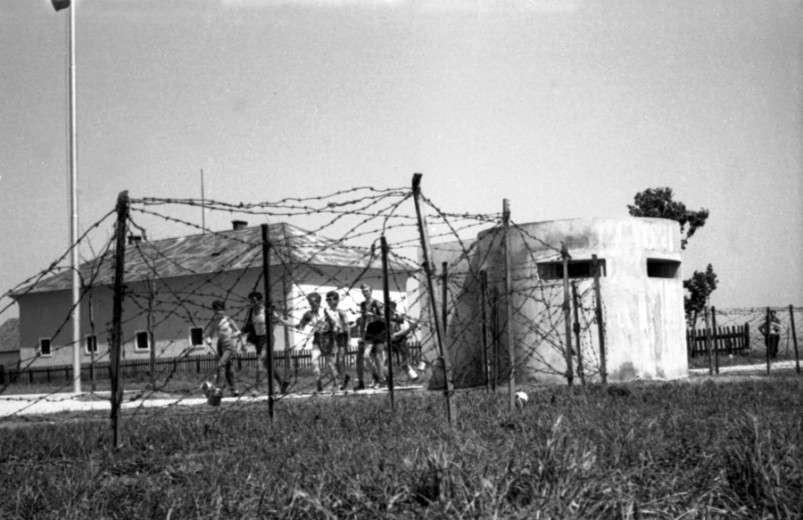 March Along the Wire of Occupied Ljubljana, 11 May 1958. Photo: Zvone Mahovič, kept by the National Museum of Contemporary History of Slovenia
March Along the Wire of Occupied Ljubljana, 11 May 1958. Photo: Zvone Mahovič, kept by the National Museum of Contemporary History of Slovenia
-
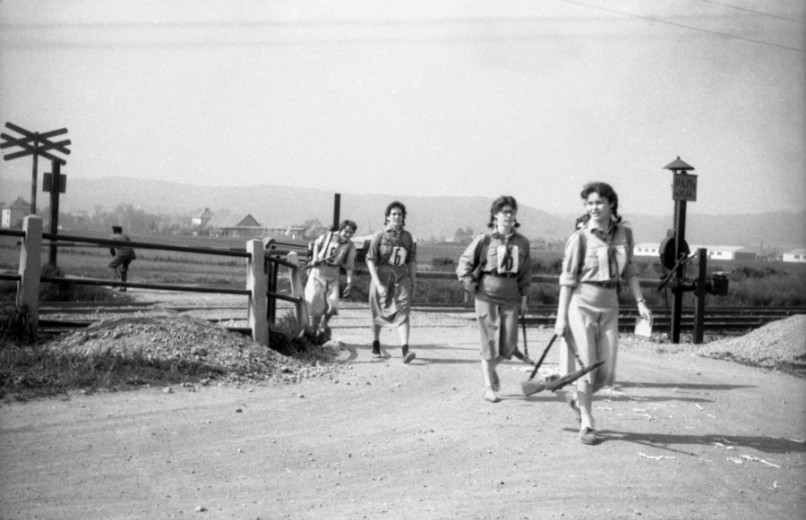 March Along the Wire of Occupied Ljubljana, 11 May 1948. Photo: Cijan Štoka, kept by the National Museum of Contemporary History of Slovenia
March Along the Wire of Occupied Ljubljana, 11 May 1948. Photo: Cijan Štoka, kept by the National Museum of Contemporary History of Slovenia
-
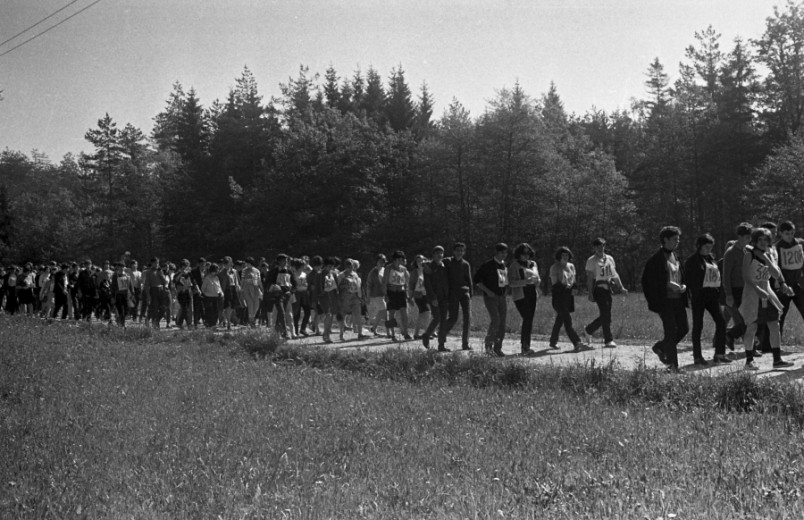 Run Along the Wire. Ljubljana, May 1969. Photo: Marjan Ciglič, kept by the National Museum of Contemporary History of Slovenia.
Run Along the Wire. Ljubljana, May 1969. Photo: Marjan Ciglič, kept by the National Museum of Contemporary History of Slovenia.
-
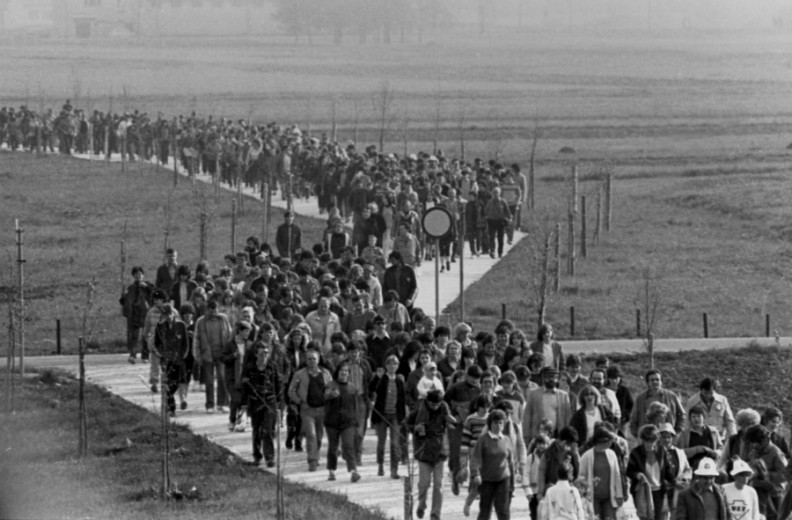 March Along the Wire. Ljubljana, May 1985. Photo: Janez Pukšič, kept by the National Museum of Contemporary History of Slovenia.
March Along the Wire. Ljubljana, May 1985. Photo: Janez Pukšič, kept by the National Museum of Contemporary History of Slovenia.
There were 206 bunkers and watchtowers built along the perimeter, which was guarded by around 1,300 soldiers and 400 policemen. After the capitulation of Italy, Ljubljana continued to be surrounded by wire under German occupation.
The Green Ring around Ljubljana
The Trail of Remembrance and Comradeship was started to be built immediately after the war and completed in 1985. The trail is approximately 4 metres wide, lined by trees and covered mostly with gravel, with some sections passing through residential areas.
The greenest part of the trail runs through the Golovec forest, and one of the most beautiful sections passes by the pond of Koseški bajer.
Today, the trail is a valuable recreational resource that offers walkers, runners and cyclists a unique experience, linking the natural environment and history. It is a symbol of freedom, solidarity and remembrance.
Walk Along the Wire
The first walk along the path of the former barbed wire fence was organised in 1957. Today, the now traditional event takes place on the first Saturday after 9 May, Ljubljana Day. It is one of the largest recreational sporting events in Slovenia. Thousands of walkers and runners take part in the walk every year, with more than 37,000 participants taking part in the event last year. The Walk Along the Wire is actually a three-day event, starting on Thursday and Friday with walks for kindergarten children, primary and secondary school pupils.The Saturday walk around Ljubljana is the most popular.
Participants start their journey at one of the eight checkpoints, where they also receive a leaflet, which is stamped at each checkpoint with the time of their visit.
The event takes place between 6am and 5pm, and those who complete the entire route and collect all the stamps within that time receive a medal. Participants are free to adapt the length of the route to suit their own abilities. This is an opportunity for many people to get to know Ljubljana in a slightly different way in a relaxed and sporting atmosphere. Since 2016, the Walk Along the Wire has been officially recognised as part of Slovenia’s living cultural heritage.
The Trio Race
The Trio Race is part of the Walk Along the Wire. It is a team race where teams of three run together from start to finish. All three members of the trio must get to the finish line together, with the time of the last team member determining the result. This is what makes the Trio Race so special – it is not just about sporting competition, but above all about teamwork and mutual support. Runners can take part in the 12.5- and 20-kilometre races. A shorter 3-kilometre run is organised for children.


